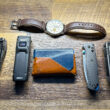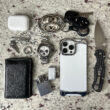This is a continuation of the Top 10. The lights on this part of the list are among my favorite on the market right now. These are the true creme de la creme. Read on
Number 5: Eagletac TX25C2 (purchase)
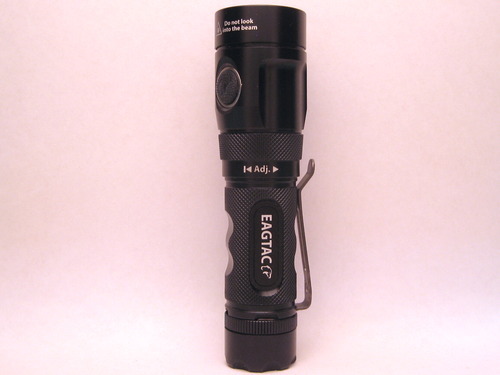
If you do need a lot of lumens, then say hello to the Eagletac TX25C2. This is one of the smallest lights to run an 18650 battery (the Zebralight SC600 series is a hair smaller) on the market and it is a fire bringer. Putting out a useful low (a rarity for uber bright lights), an excellent medium, and a vision-spot inducing high of nearly 1000 lumens, the Eagletac is a great light. Bigger than any 1xAA or 1xCR123a light, it is still pocketable, unlike a lot of the more tactically oriented lights in the 18650 format. The UI is dead simple, the clip is superb (secure yet still removeable without tools), and the light tailstands well. I hope Eagletac knows what they have in this light, as it is truly excellent. The form factor would make an excellent platform to build around with useful accessories. I say useful because there is an accessory kit with an 2×18650 battery tube and lens filters, all of which is ho hum. Give us a flexible tripod attachment that works in the same way the pocket clip does or something that lets you make this thing a pure throw light, such as a head with an aspheric lens. Heck, the light’s bright enough to use as a firestarter with an properly design beam collector such as the one made for the Spy 007 appropriately named the “Dragon Fire Nozzle” (see here) Something tells me an accessory like that trips every single red flag Eagletac’s lawyers have regarding product liability. Still it would be really cool.
Number 4: Zebralight SC52

When this light came out I did a double take at the specs. I checked the lumens output, then the battery format, and then the lumens again. With a high of 250 lumens on a 1xAA battery, the SC52 demonstrated definitively that the need for CR123a batteries was over. Sure, you can get higher highs from CR123a lights, but in an EDC role you rare, very rarely, need more than 250 lumens. The UI is a bit wonky, but Zebralight has always marched to the beat of its own drum. Because of that you get things like the side switch which allows for excellent tailstanding. In fact, I actually like the side switch better than the traditional, end-of-the-light clicky. The pocket clip is excellent as well. There is very little not to like here.
Number 3: Sunwayman Mr. Elfin M11R (purchase)
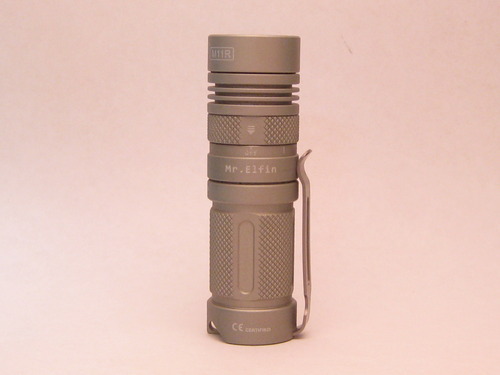
It has taken a while to get to a CR123a light in part because of the technology improvements mentioned above, but also because so many of these lights still use old fashioned UIs. Not so with the Mr. Elfin. With its magnetic selector ring you get dialed in (literally) precision on the output in a dead simple UI. This is a light you can hand to a flashlight neophyte and they can manage with ease. The pocket clip is also noteworthy, one of the few truly deep carry clips in the flashlight world. Finally, this sucker is a tailstanding champion. The output is not as high as other 1xCR123a lights such as the LED Lenser F1, the JetBeam RRT-01, or the Olight S10-L2 Baton, but at 180 lumens it will get the job done. The better UI and form factor will be more valuable to you than the extra lumens would be.
Number 2: Quantum DD (or D2)
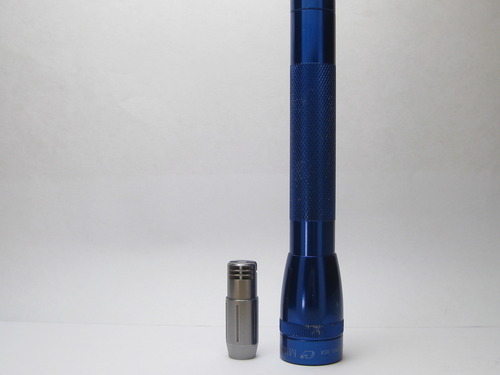
How’s that for a size comparison? This light could have easily been #1. It is an amazing little thing, pumping out around 80 lumens from something the size of your thumb nail (like babies are compared to fruits in utero, flashlights, by tradition, are compared to parts of your hand I guess). The DD and its successor, the D2, are based on a series of custom lights and I have reviewed both. I can safely say that the small batch production lights are better. They come with a very nice battery charger, which is a must when your light uses a weirdo battery like the DD and D2 do. The battery is vanishingly small, a speck really, but it packs a punch, as this light can high around 80 lumens. You can get it with tritium locators in the tail, probably the cheapest, most readily available light with locators. And the whole thing comes in around $60. There is one small drawback though—this thing is hard to put on a keychain.
Number 1: Peak Eiger Hi CRI
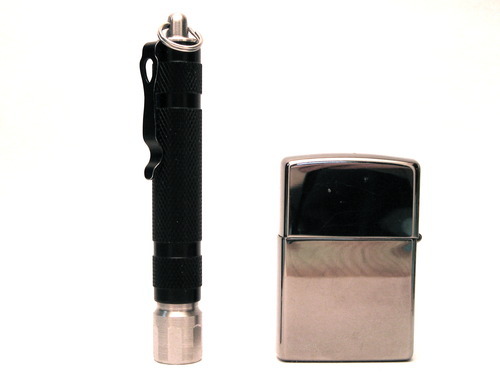
The Eiger is part of a larger trend towards flashlight platforms and away from individual lights. By using standardized parts, the maker can offer a light that, with the right accessories, can do just about anything. In the Eiger you get a light that can do throw, thanks to a turbo head, a light that can run for a long time thanks to a 2xAAA body tube, and a light that shrink down to a keychain thanks to a smaller body tube. My favorite configuration of this light uses the monetary on switch, the QTC pill for infinite variable brightness, and a 1xAAA body tube. I added an aftermarket clip, the Prometheus clip (although the Preon 1 clip also works, as you can see above), and the end result is a light that can do just about anything. It can hit 200 lumens. It can whisper out a half a lumen. It can run on just about any AAA battery on planet Earth. And it does so in a package smaller than your index finger. Add in the premium Nichia 219 emitter and you have a light that is very close to perfect. The one drawback, which can be overcome after you get the “feel” for the pill, is the finnicky QTC output. After a year, I can dial it in, but it does take some time and occasionally a shock or jolt will make the light skip up to higher brightness levels.
There are other great lights out there, but all of them cost more than $100. Any of the lights on this list are more than enough for EDC use and many will be useful for years if not decades, even if they no longer have the most cutting edge emitter.

